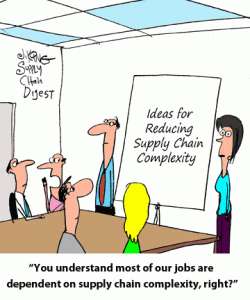
These deposited checks or discounted bills of exchange drawn by your business may get dishonored on the date of maturity. As a result, the bank debits the amount against such dishonored cheques or bills of exchange to your bank account. When your business issues a check to suppliers or creditors, these amounts are immediately recorded on the credit side of your cash book. However, there might be a situation where the what are expense accounts receiving entity may not present the checks issued by your business to the bank for immediate payment. The debit balance as per the cash book refers to the deposits held in the bank, and is the credit balance as per the passbook. To successfully complete your bank reconciliation, you’ll need your bank statements for the current and previous months as well as your company ledger.
When you compare the balance of your cash book with the balance operating income showcased by your bank passbook, there is often a difference. One of the primary reasons this happens is due to the time delay in recording the transactions of either payments or receipts. These outstanding deposits must be deducted from the balance, as per the cash book, in the bank reconciliation statement.
- By comparing your company’s internal accounting records to your bank statement balance, you can confirm that your records are accurate and analyze the reasons behind any potential discrepancies.
- Reconciliation of bank statements is the process of comparing the transactions recorded in the company’s accounting records with the transactions listed on the bank statement.
- Regardless of how you do it, reconciling your bank account can be a priceless tool in your personal finance arsenal.
- Keep up with Michelle’s CPA career — and ultramarathoning endeavors — on LinkedIn.
Timing Differences in Recording of Transactions

Using this simple process each month will help you uncover any differences between your records and what shows up on your bank statement. Using cloud accounting software, like Quickbooks, makes preparing a reconciliation statement easy. Because your bank account gets integrated with your online accounting software, all your bank transactions will get updated automatically and each item will be matched with your books of accounts. When all these adjustments have been made to the books of accounts, the balance as per the cash book must match that of the passbook.
Reconcile Balances
Performing regular bank reconciliations helps you stay on top of cash flow, keep organized records for tax season, and minimize the risk of fraud and theft. Reconciling a bank statement is an important step to ensuring the accuracy of your financial data. To reconcile bank statements, carefully match transactions on the bank statement to the transactions in your accounting records. With QuickBooks, you can easily reconcile bank accounts to ensure that the dollars you record are consistent with the dollars reported by the bank. In the absence of proper bank reconciliation, the cash balances in your bank accounts could be much lower than expected, which may result in bounced checks or overdraft fees. A bank reconciliation statement is a document that compares the cash balance on a company’s balance sheet to the corresponding amount on its bank statement.
Step 3. Compare Withdrawals
Match the deposits in the business records with those in the bank statement. Connect QuickBooks to your bank, credit cards, PayPal, Square, and more1 and we’ll import your transactions for you. When you receive your bank statement or account statement at the end of the month, you’ll only spend a minute or two reconciling your accounts. In order to prepare a bank reconciliation statement, you’ll need to obtain both the current and the previous month’s bank statements as well as the cash book. NSF checks are an item to be reconciled when preparing the bank reconciliation statement, because when you deposit a check, often it has already been cleared by the bank.
In these cases, journal entries record any adjustment to the book’s balance. After fee and interest adjustments are made, the book balance should equal the ending balance of the bank account. Human error in the data entry process can sometimes lead to incorrect amounts or miscalculations on a business’s financial statements. While it cannot entirely erase the potential for data processing errors, using accounting software can reduce the likelihood of errors to help generate more accurate financial statements.
Reconciling the two accounts helps identify whether accounting changes are needed. Bank reconciliations are completed at regular intervals to ensure that the company’s cash records are correct. Reconciling your bank account should be done monthly to catch discrepancies early and keep financial records accurate. Businesses with high volume of transactions must reconcile their bank statements weekly or daily to manage cash flow efficiently. A bank reconciliation is part of the month-end close process, which includes reviewing the company’s balance sheet, income, bank statements, expenses, intercompany trades, and other information.
He also finds $500 of bank service fees that hadn’t been included in his financial statement. Compare the business’s financial records to the bank statement to spot the errors. This can be accomplished by matching transactions, and then adding or deducting any transactions that do not align to balance the total amounts. You only need to reconcile bank statements if you use the accrual method of accounting.
10% of all occupational fraud cases in small businesses are due to bank account reconciliation errors. The first step is to obtain a detailed statement comparability in international accounting standards from the bank, which includes information about checks cleared and rejected by the bank, transaction charges, and bank fees. To do this, businesses need to take into account bank charges, NSF checks, and errors in accounting. The more frequently you reconcile your bank statements, the easier it is each time.
Whether this is a smart decision depends on the volume of transactions and your level of patience. Reconciling your bank statements lets you see the relationship between when money enters your business and when it enters your bank account, and plan how you collect and spend money accordingly. It’s important to perform a bank reconciliation periodically to identify fraudulent activities or bookkeeping and accounting errors.

